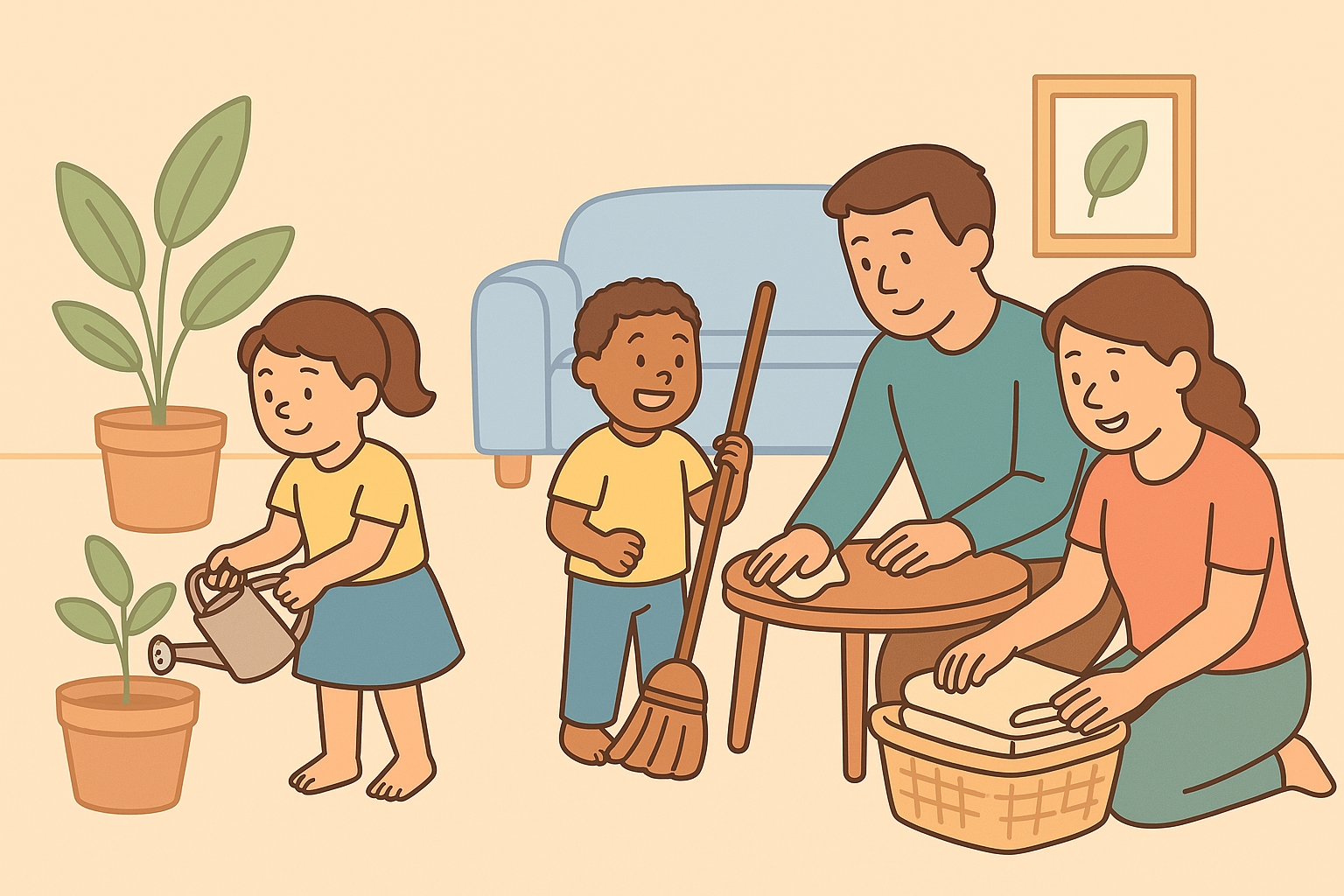Creating Family Chore Routines That Actually Stick
Creating Family Chore Routines That Actually Stick
Every parent wants kids who pitch in — but let’s be honest: getting children to do chores without nagging can feel impossible.
The good news? When chores are framed as teamwork instead of punishment, kids learn responsibility and feel proud to contribute.
The secret isn’t a perfect chart — it’s building a routine that feels predictable, shared, and doable.
Why Chores Matter More Than You Think
Helping out around the house isn’t just about clean floors — it’s about belonging. When children participate in daily routines, they learn:
Responsibility and follow-through
Empathy for others’ work
The confidence of being needed
💡 Fuzzigram tip: Kids aren’t born knowing how to help — but they love feeling capable when guided gently.
You might also like Family Dinner Rituals That Strengthen Connection.
Step 1: Start with Shared Ownership
Replace “chores” with “family jobs.” The language shift matters — it turns tasks into teamwork.
Try:
“In our family, everyone helps the home run smoothly.”
“Your job helps us all have more time to play.”
💡 Fuzzigram tip: Kids are more motivated when they see chores as belonging to everyone, not just “because Mom said so.”
Step 2: Match Chores to Age and Ability
Give tasks that build success, not frustration.
Ages 2–4:
Put toys in a bin
Match socks
Help feed a pet
Ages 5–7:
Wipe the table
Sort laundry
Water plants
Ages 8–10:
Fold towels
Vacuum small areas
Help cook simple meals
💡 Fuzzigram tip: Confidence grows faster than skill — start with simple wins.
Step 3: Create Predictable Chore Times
Instead of random requests, anchor chores to daily routines:
Morning: make beds, feed pets
After school: unpack bags, set table
Evening: tidy toys before storytime
💡 Fuzzigram tip: Predictability turns resistance into habit — no reminders needed.
You can cross-link to Morning Routines That Actually Work for Kids (and Parents).
Step 4: Use Visual Aids
Charts, stickers, and visual cues make chores tangible for kids. Try a wall chart or simple magnetic board to track progress.
💡 Fuzzigram tip: Visual progress feels like success — and success is motivating.
Step 5: Make It Fun (Really)
Turn chores into mini-games:
“Laundry basketball” (throw socks in the hamper)
“Ten-minute tidy” with a timer
“Mystery job” cards for surprise helpers
💡 Fuzzigram tip: Fun rewires chores from obligation to participation.
You might also like Helping Kids Become Independent in Their Morning Routine.
Step 6: Model What You Want
When kids see adults pitching in calmly, they internalize that energy. If parents complain, kids mirror the resistance.
💡 Fuzzigram tip: Attitude is caught, not taught.
Step 7: Celebrate Effort, Not Perfection
Instead of correcting how the towels are folded, say:
“Thank you for helping — it made a big difference.”
Kids thrive on being appreciated more than being “right.”
💡 Fuzzigram tip: Praise the habit, not the result — effort builds endurance.
Step 8: Review and Refresh
Every few months, adjust jobs to match growth and interest. Rotate tasks so kids stay engaged and avoid burnout.
💡 Fuzzigram tip: Ownership grows when children have a voice in what they do.
Chores don’t just build clean homes — they build capable, confident children.
When kids help out, they learn that responsibility isn’t a burden — it’s a way to belong.
And when the family works together, the house feels more like a team — and less like a to-do list.
This content is for educational purposes and is not a substitute for professional medical or psychological advice.
Popular Parenting Articles


